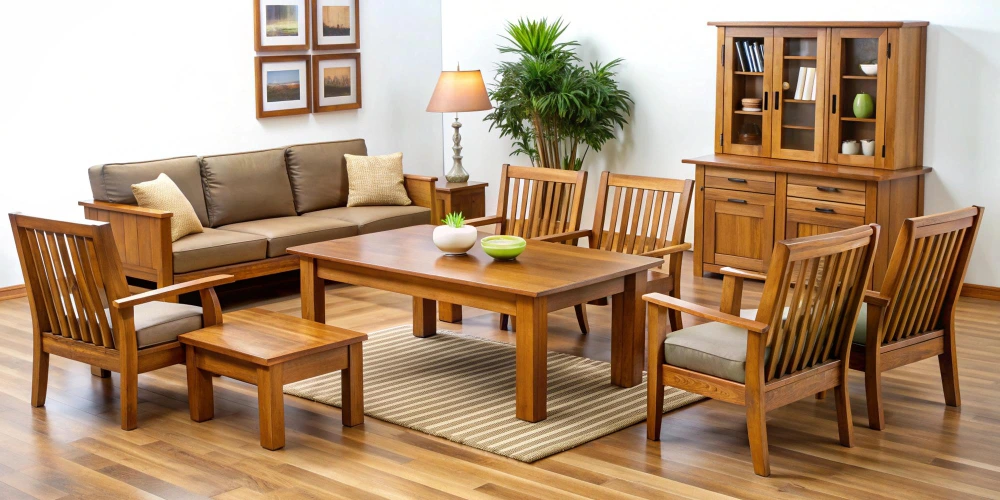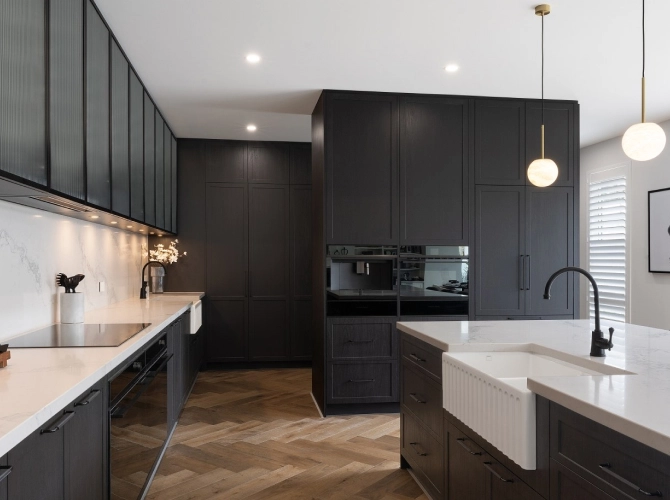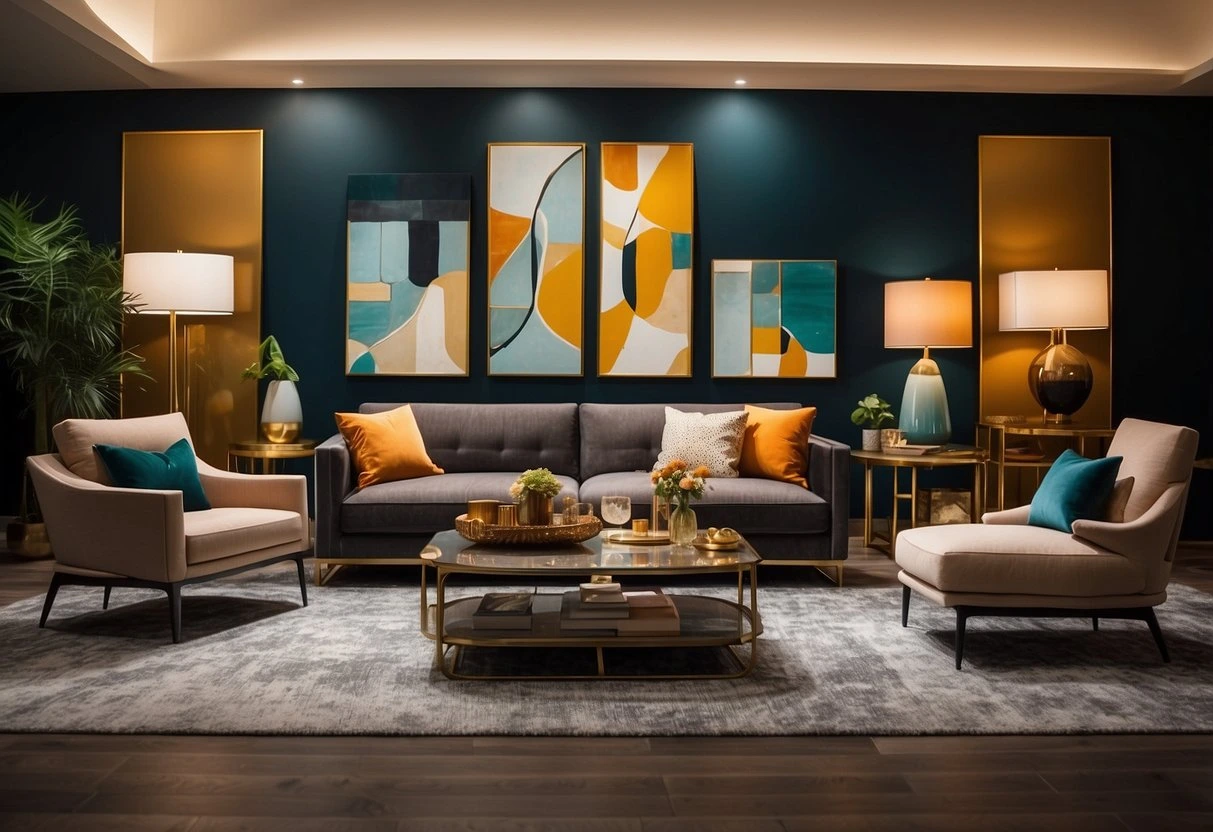Sydney’s laid-back, coastal vibe calls for decor that’s as natural and enduring as its sunsets. That’s why Timber Furniture in Sydney isn’t just a style statement – it’s a sustainable choice. Picture this: you’re sitting at a solid wood dining table after a beach BBQ, coffee mug in hand, feeling grounded by the grain pattern under your fingers. This isn’t an accident. Timber brings organic warmth and a touch of the Aussie outdoors into your home, aligning perfectly with a green lifestyle. As Sydney-siders increasingly care about the planet, timber furniture ticks all the boxes: it’s beautiful, built to last, and eco-friendly.
Think of a high-quality wooden table as nature’s own carbon vault. Every time a tree grows, it sequesters CO₂, and when that wood becomes furniture, it keeps storing that carbon for as long as the piece exists. In fact, Timber NSW reports that each tonne of timber produced removes about 1.8 tonnes of CO₂ from the air. Unlike plastic or metal chairs that require mining or petrochemicals, a timber chair lets the forest do the work for you. Even when your old timber sideboard finally retires, it biodegrades far more cleanly than synthetic furniture. In short, choosing timber furniture is like investing in a small carbon sink for your living room.
Timber Furniture in Sydney: Style Meets Sustainability
Timber pieces offer a warm, lived-in vibe that resonates with Sydney’s casual elegance. Imagine a sleek, solid-oak bench on a sunlit balcony, or a rustic mahogany coffee table in a minimalist apartment – wood complements every interior. It’s why so many Sydney residents love it. Each timber piece is unique, displaying its own knot and grain pattern – think of these as nature’s fingerprint, so no two dining sets are identical. This natural beauty fits right into Sydney’s palette of neutral sands, leafy greenery, and coastal blues.
- Natural Warmth: Timber exudes a warm glow. Its rich tones and textures bring a cozy, organic feel to spaces (great for those chilly North Shore evenings or breezy Bondi mornings).
- Coastal Cool: For a city famous for indoor–outdoor living, wood blends with plants, concrete, and stone effortlessly. It doesn’t clash with natural light; instead it enhances it, reflecting a soft, inviting aura.
- Versatility: From mid-century modern teak to reclaimed barn wood, timber bridges styles. You can pair a Scandinavian-style wooden side table with a linen sofa or mix rustic and modern without effort. It’s the design equivalent of having Vegemite with both breakfast and dinner – versatile and always right for the occasion.
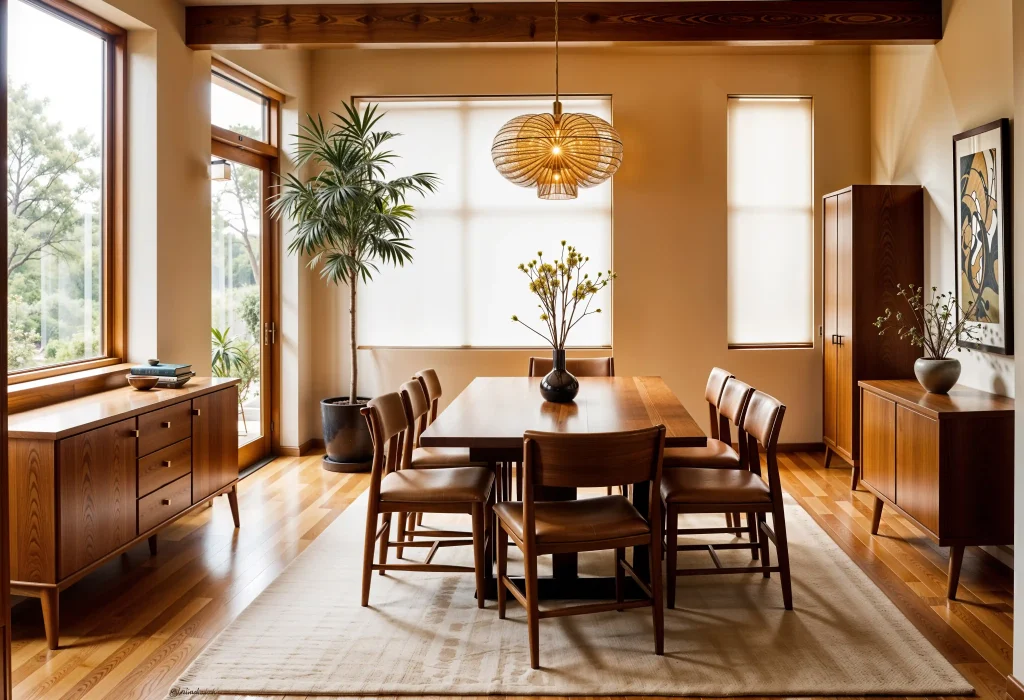
“Timber furniture isn’t a trend – it’s timeless,” says a Sydney designer. Indeed, unlike flimsy, mass-produced pieces that we toss after a year, quality wood furniture tells a story over decades. In a city where sustainability is the new sophistication, solid wood furnishes your home and your conscience.
Carbon Crunch: Why Wood Wins for the Planet
Let’s get a bit scientific (but not too boring). Wood is essentially stored solar energy and carbon dioxide. While trees grew, they inhaled CO₂ and exhaled oxygen. When we turn that wood into a table or shelf, that CO₂ stays locked in place. Even after the furniture’s useful life, most of that carbon remains trapped – studies show more than 95% stays stored after 30+ years in landfill. By contrast, plastics and metals often release greenhouse gases either during production or decomposition.
Planks from sustainably managed forests keep carbon out of the air. Here, a peaceful lakefront dock made of wood reminds us: forests are carbon sponges. Sustainable forestry practices (like those certified by FSC) ensure “there is no net loss of forest over time”, meaning trees are replanted or regrown. In short, responsible timber means forests keep doing their job regulating climate.
Replacing a plastic or metal chair with a wooden one can have a surprisingly big impact. For starters, manufacturing wood furniture uses much less energy. Timber NSW reports that making a steel chair takes about 19× the energy of an oak chair, plastic takes 45×, and aluminium a whopping 85×. We’ve put this in a table to show why:
| Material | Energy to produce (relative to kiln-dried hardwood) |
| Hardwood (e.g. oak) | 1× (baseline) |
| Steel | ~19× more energy |
| Plastic (PVC) | ~45× more energy |
| Aluminium | ~85× more energy |
Less manufacturing energy means fewer emissions. In fact, research on furniture’s carbon footprint shows that substituting wood for non-wood materials reduces greenhouse gases. Think of swapping a plastic table for a wooden one as an easy way to shrink your home’s carbon footprint. Plus, wood often needs only natural oils or water-based finishes, avoiding the nasty volatile organic compounds (VOCs) that some synthetic furniture might off-gas.
- Green Benefits at a Glance: Choosing timber hits many sustainability checkmarks: it’s renewable (trees can regrow), carbon-storing, durable (so you buy less often), biodegradable at end-of-life, and usually non-toxic. In practice, that means a wooden table can serve you for decades instead of months, shrinking landfill waste and emissions.
Built to Last: Durability as Sustainability
Wood furniture is an investment that keeps paying off. Unlike chipboard or plastic pieces that sag or snap after a few years, a well-made timber bed frame or dining table only gets better with age. You really can inherit grandma’s old cabinet with pride. As Habitat Furniture notes, timber pieces are “built to last a lifetime”. In fact, Queensland’s Home Design industry often touts hardwood’s longevity: solid wood furniture has a “half-life” of up to 30 years (and often much more). That means most timber pieces stand the test of time.
I’ll admit, early on I was skeptical. We’ve all seen those wobbly IKEA chairs that dissolve under a teenager in seconds. But after years of moving house and scuffing many a cheap flat-pack wardrobe, I finally splurged on a blackbutt coffee table from a local craftsman. That table has spent two bustling child-filled birthdays under its polished surface, and still looks pristine – just a little more character to its wood, like wrinkles from happy living.
Durability isn’t just about toughness; it’s about repairability. Got a scratch on a timber desk? A little sanding and oil, and it looks nearly new. Someone knocked a leg? A carpenter can tighten or replace it. Compare this to a cracked MDF shelf – toss it and buy new. Every repaired wooden piece avoids more waste. It’s no wonder many Sydney designers encourage “buy once, buy well.”
- Quality Over Quantity: Ultimately, with timber furniture you’re buying one great item instead of several inferior ones. This reduces consumption. You might pay more upfront, but over 30 years that extra cost is usually lower than repeatedly replacing cheaper stuff. Plus, there’s that warm, lived-in vibe that only well-used wood can give.
Local Roots: Australian Woods & Responsible Sourcing
Sydney, blessed with access to lush Australian forests and plantations, is well-placed to embrace truly local timber furniture. Aussie hardwoods like jarrah, blackbutt, spotted gum and Tasmanian oak are not only beautiful but also abundant in responsibly managed forests. When harvested correctly, these native timbers regenerate quickly – unlike clear-cutting ancient rainforest. Look for furniture made from plantation-grown or certified wild wood.
Speaking of certification: the FSC (Forest Stewardship Council) logo is your friend. It guarantees the wood in your table comes from forests managed so well that “there is no net loss of forest over time”. In other words, for every tree used, another is planted or saved. In fact, globally 99.5% of IKEA’s wood is FSC-certified or recycled, and locally many designers follow suit. Even if you can’t spot a logo on a handcrafted Sydney piece, you can ask makers about their timber’s origin.
Another Aussie label to watch for is the Australian Forestry Standard (AFS), now aligned with PEFC standards. Both AFS/PEFC and FSC are credible. At the end of the day, the goal is the same: ensure forests stay healthy and wildlife thrives. Timber Sydney furniture often comes from suppliers who plant a handful of saplings for each one cut. So your beloved side table might have a whole future woodlot hidden in its DNA!
- Tip: When shopping, consider reclaimed timber. Many Aussie workshops salvage old beams or wine barrels. Reclaimed wood is doubly green: it skips the carbon-cost of milling new logs and adds unique character (no two reclaimed tables will ever match!).
Sustainable Style Tips: Bringing the Outdoors In
One quick way to spot sustainable style? Look for a love of nature in decor. Picture large leafy plants intertwined with a bamboo buffet, or a jute rug beneath a chestnut dining set. These combinations echo Sydney’s eco-chic vibe.
In practice, mixing timber with other natural materials keeps things harmonious. For example, pair a slatwood bench with cotton linens and a basket of succulents on top. Or put a hand-carved wooden coffee table in front of a sofa (no metal/wood laminate needed).
Here’s a clever idea: paint one wall in your living room in a deep green or blue. Suddenly, your teak sideboard against it feels like a slice of forest indoors. Similarly, an outdoor teak dining set under fairy lights on the patio brings the bush to your balcony dinner parties. In short, let timber be the backbone of your color scheme and mood.
Table Centerpiece Bonus: Instead of a plastic vase, use a polished wooden bowl for fruit, or cluster glass jars on a wooden tray. You’ll be surprised how just adding a wood-accent can elevate the space.
Plant-n-Pine: If you really want to lean into the trend, combine your timber furniture with indoor greenery. Large pot plants thrive in Sydney light, and they look especially good next to wood. It’s the closest you can get to hugging a tree and a chair at the same time.
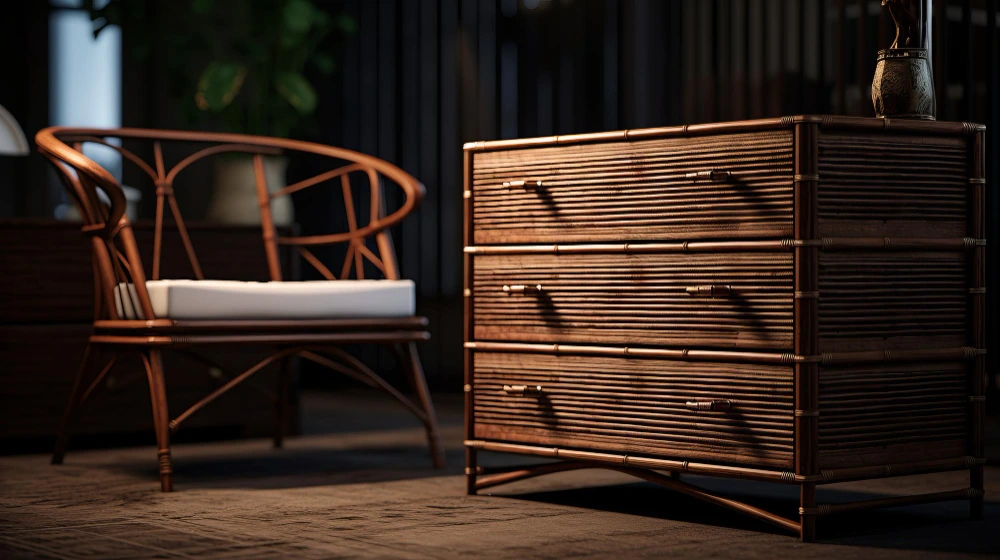
Making Every Choice Count
You might be thinking, “This all sounds great, but will it blend with my life?” The good news: timber furniture is low-maintenance. A quick dust or occasional wipe with a damp cloth is usually enough. Every few years, you can use a natural wood oil or wax to refresh the surface. (For those trendy ultra-matte finishes, even just rubbing a bit of olive oil can revive dried wood.)
Just as importantly, every timber purchase supports an industry that seeks harmony with nature. By choosing local, FSC-certified, or reclaimed wood, you’re voting (with your wallet) for greener forests and ethical craftsmanship. It’s a partnership with nature. And hey – it never hurts to have good company at dinner, like the knowledge that your dining table is actually helping keep the planet cooler.
Conclusion
Timber furniture in Sydney isn’t just pretty – it’s a statement of values. By bringing wood into your home, you’re choosing durability over disposability, and nature’s wisdom over fast fashion. Each piece holds history (and carbon) in its grains, meaning you really can have style and sustainability at the same time.
Whether you’re furnishing a new flat in Surry Hills or upgrading a Bondi patio, consider going timber. Check for those sustainable certifications, ask about provenance, and think long-term. Not only will you enjoy the warmth and character of wood under your fingertips, you’ll also rest easier knowing you’ve helped “lock away” some carbon.
Ready to make the switch? Visit a local Sydney woodworker’s studio or eco-friendly furniture store – you might even get to see timbers turning into tables on-site. Feel the weight of a carefully planed table leg, admire the grain, and join Sydney’s eco-conscious community one beautiful piece at a time. Your home (and the planet) will thank you.
Frequently Asked Questions
Why is timber furniture considered better for sustainable living?
Timber, when sourced responsibly, is renewable and actually stores carbon. Every wooden chair or table was once a tree absorbing CO₂, which it keeps locked away as furniture. Quality timber pieces last for decades, meaning fewer replacements and less waste. As FSC notes, sustainably harvested wood means “no net loss of forest” over time.
How can I be sure my timber furniture is eco-friendly?
Look for trusted labels. FSC or PEFC certification on the product tells you the wood comes from well-managed forests. You can also ask retailers if the timber is reclaimed or plantation-grown. Buying local Sydney-made furniture cuts down shipping emissions too. Proper care (like oiling and gentle cleaning) will extend its life even further.
How long does timber furniture actually last?
With basic care, solid wood furniture can easily span decades. In Australia’s moderate climate, quality pieces (especially hardwoods) hold up very well. Many become heirloom items. A well-maintained oak or eucalyptus dining table might serve you for 30+ years. In fact, Timber NSW notes the half-life of wood furniture can be up to 30 years, and often they last much longer with love and care.

